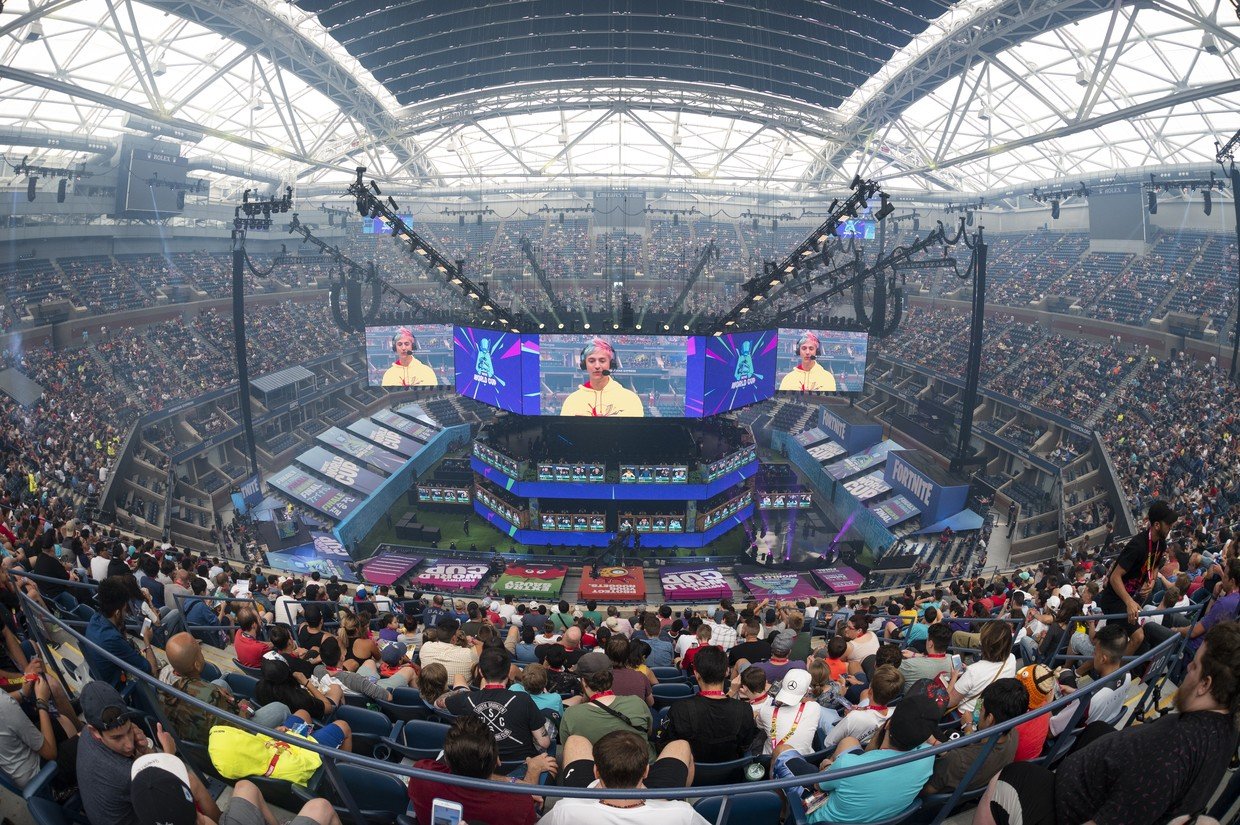Why Ninja’s Mixer move is a big deal, and not just for gamers
As Fortnite mega-streamer Tyler ‘Ninja’ Blevins makes waves with his move from streaming giant Twitch to the obscure Mixer, we look at a once-nerdy pastime whose following now rivals that of traditional sports.
Throughout the past week, all eyes in the gaming world have been on mega-popular videogame streamer Ninja, after he announced his divorce from Amazon-owned Twitch last Thursday. He would now exclusively stream on Microsoft-owned Mixer – and that was probably the first time a lot of the casual viewers even heard that name (Mixer’s, not Ninja’s – everyone and their grandmother knows that guy).
Ninja, the new household name?
Ninja is the epitome of a niche entertainer making a break for the mainstream. He started streaming in 2011, having played professionally before that, but mostly made big headlines in the past couple of years. Now, he makes appearances on ‘mundane’ news and talk shows and is seen palling around with non-gaming celebrities like rapper Drake and footballer Neymar, both in-game and IRL. He has run charity streams with hundreds of thousands of dollars raised, and has appeared on CNN and CNBC.
Also on rt.com Drake v Ninja: Twitch smashes live-streaming record in gaming session“We want him as a household name, so we’re trying to move him from just gaming to everywhere,” Ninja’s wife/manager Jessica Blevins said in 2018 and, judging by the number of non-gaming headlines with his name in them, they are succeeding. His best pal Drake, the rapper, has fewer subscribers on YouTube (though much more views, perhaps stemming from the fact that people are more likely to re-watch a favorite music video than a recorded Fortnite stream).
All in all, from the looks of where things are going, in the near future it might be a Neymar getting a popularity boost from being seen next to a Ninja, not the other way around.
Just how much does Ninja make?
Ninja’s revenues, or those of other popular streamers, are hard to track down with any certainty, as Twitch is not exactly transparent on how much its top streamers make. But estimates have been made putting Ninja’s net worth at anywhere between $6 million and $15 million, and growing fast. He made most of that money in the past two years and, apparently, the Mixer deal has added a huge chunk. Microsoft has not disclosed how much it paid for the rainbow-haired star – one Verge editor speculated the sum at $50 million, but that’s a bit out there, a number comparable with top soccer transfers (for comparison, Ninja’s other buddy Neymar is worth some $185 million – the streaming business is not quite there yet.)

Where does all that money come from? Twitch subscribers, for one. You can ‘follow’ a streamer to watch for free, or you can ‘subscribe’ and prove your dedication with a monthly donation of $5 or more. Ninja had over 50,000 of those, so you can do the math. There are also one-off donations viewers can make if they’re feeling generous.
Even those who don’t pay directly generate revenue for Twitch and the streamers, by watching ads that occasionally pop-up in-stream, similar to YouTube.
Money also trickles in through affiliate sales (when a viewer clicks a banner on a streamer’s page to buy an item inside a videogame), merchandise sales and E-Sports league partnerships.
Then there are sponsored streams. Every now and again, a videogame publisher will want to advertise their new product by having a popular gamer play it for millions to watch. This was the case with EA, which reportedly paid Ninja $1 million to take a break from Fortnite and play rival battle-royale game Apex Legends.
And finally, there are brand endorsement deals, where Ninja is, again, a prime example: he has had deals with Red Bull and Uber Eats, and partnered with Samsung for a Galaxy Note9 commercial.
Why did Microsoft want Ninja so bad?
Microsoft’s obvious goal in buying up someone of Ninja’s stature is to boost the viewership of its previously-obscure streaming platform – Mixer was only watched by about three percent of all stream viewers before, with most of the rest staying true to Twitch or YouTube.
Indeed, in the wake of Ninja’s announcement, Mixer sailed past YouTube and Gmail to become the most downloaded app in the AppStore. But the clever move is not without caveats, and the next couple of months will decide whether it’s a make or a break.
Just five days after packing up and moving to the “other castle” (that’s Twitch’s tongue-in-cheek Mario joke about Ninja’s departure,) Ninja boasted of having a whopping one million subscribers on Mixer. On the surface, it looks like an enormous success, considering that he only had around 50 thousand on Twitch.
Today we hit 1,000,000 active subscribers on mixer ^-^ thank you for all the incredible support. I haven't felt this good in a long time. pic.twitter.com/kdLgBJk0Ud
— Ninja (@Ninja) August 6, 2019
But that’s because Microsoft, to further boost their new pet, made subscription to Ninja free for the first two months – after that, everyone will have to pay $5.99-a-month to keep the subscription, inevitably resulting in a dramatic drop in numbers.
Which means that anyone subscribing to him now should be valued like a simple follower on Twitch – someone who is there to watch for free, a sign of popularity that does not translate into revenue. And, in these terms, Twitch still beats Mixer hands-down: Ninja had a whopping 14 million followers on Amazon’s platform.
The question is whether those that remain will be enough to keep Mixer afloat, or whether it will sink back into obscurity, potentially dragging Ninja with it.
One Ninja does not a streaming service make
Microsoft seems serious about giving its streaming service a fighting chance against Amazon’s behemoth, seeing as how it started by scooping up the most expensive streamer out there. But unless the plan is to put all eggs in one basket, more deals are likely in the offing – at least if the Ninja experiment proves a success.
And if this leads to bidding wars over streamers on the scale of labels’ competitions for artists or football clubs’ haggling over players, we might get more weird household names in the near future. Streamers to look out for include Shroud, a.k.a. Michael Grzesiek ($4 million estimated yearly income, close second to Ninja’s $5 million), TimTheTatman, a.k.a. Timothy John Betar ($2.7 million), DrLupo, a.k.a. Benjamin Lupo ($1.9 million), DrDisRespect (a.k.a. Guy Beahm)… the list goes on to include at least a dozen more guys who earn over a million dollars a-year by playing games and letting the world watch.
This is the new mainstream
All in all, Ninja is a case in point that videogames are in the mainstream to stay – like with traditional professional sports, you don’t have to be a player to be able to enjoy watching a stream. The accessibility threshold is even lower for games – unlike professional sports, in many cases you don’t even have to know the rules (or they are self-explanatory – grab gun, shoot guy, make a mocking emote.)
One infamous example of this growing popularity is that time in April when the North American League of Legends finale was watched by more people online than the Superbowl. And it’s only expected to grow bigger.
This has not yet translated into comparable player/streamer earnings – the world’s top-paid footballer Lionel Messi is still some 30 times richer than the world’s top-paid streamer, Tyler Blevins. But viewers are already putting their money where their eyes are, and if tech giants like Microsoft are prepared to fight for big names in streaming, we can expect the cash to flow.
If you like this story, share it with a friend!














